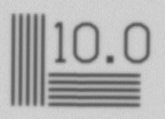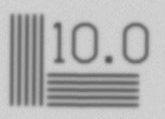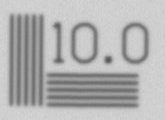optics glossary
Glossary of Machine Vision and Optics Terms
Magnification (Mag.): The image size (at the camera!) divided by the object size. Monitor size has nothing to do with it.
Working distance (WD): This is how far the object is from the front of the lens when it is in best focus.
Depth of field (DOF): This is how far the object can move towards or away from the lens while still maintaining acceptable image quality. The trick is in defining "acceptable." It really does depend on what results you are trying to achieve. We hope to make your work easier by using two different depth of field specifications that will be defined below. Honest, more is easier in this case.
Distortion: This is a statement of the percent difference between where the image of an object should be for a perfect lens, and where it actually ends up. Distortion is usually determined as a function of radial position of the lens field. It can also be thought of as a measure of the change in magnification of a lens as a function of the object radius.
For example, suppose the image of a small object occurs at a radius of 4.1 mm at the camera. For a perfect lens, the image should occur at 4.0mm. The distortion would be calculated as 0.1mm/4.0mm)*100% = 2.5%. We quote the maximum distortion values for our lenses, which is usually at the edge of the field of view.
Modulation Transfer Function (MTF): The short version is that this is a measure of image sharpness or contrast or quality. In particular, how well a repetitive line target is reproduced by a lens in terms of image contrast as compared to object contrast. The MTF value scale goes from 0 to 1, with 1 being the best, though impossible to achieve.
One must also specify the frequency of the line target, usually in terms of the number of light/dark stripes or line pairs per millimeter (lp/mm) at the image plane. To find out what that frequency is at the object plane, just multiply the image plane frequency by the lens magnification. For example, if the image plane frequency is 20 lp/mm and the lens has a magnification of 0.50X, the object plane target frequency will be 10.0 lp/mm. For more detail, please see Warren Smith’s excellent book, "Modern Optical Engineering."
Magnification Depth of Field (MagDOF): This is a statement of the distance that an object may move towards or away from a lens before the magnification changes too much. It’s a bit like distortion, but in a different direction. How much is too much? It depends on your application needs. Our lens specifications give you one cut-off point. If you want to know other values, contact us. We’ll be happy to help. Regardless, our Double Telecentric lens designs give you maximum MagDOF possible.
MTF Depth of Field (MTFDOF): This is a statement of the distance that an object may move towards or away from a lens before the MTF for a given target frequency falls below a given cut-off limit. Some vendors use a cut-off MTF value of 0.2. We usually use a value of 0.3. This means our MTFDOF may be slightly smaller, but we believe it is often a more practical specification.
Here’s an example to help illustrate what we’re talking about, using a small target at the center of the lens field of view. Keep in mind that each single line of the target is only about 3.7 pixels thick.
• Lens: SES-500 Mini-Super-Eye at F/16. Mag. = 0.50X
• Camera pixel size: 0.0067mm
• Object space pixel size: 0.0134mm
• Target: 10 lp/mm bar target
• Image Plane Frequency: (10 lp/mm)/(0.50) = 20 lp/mm




